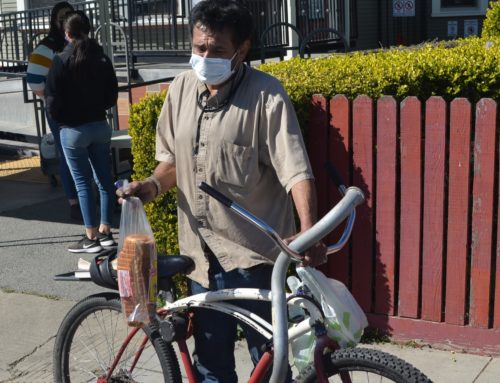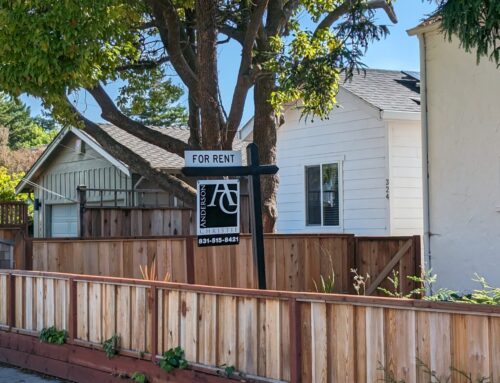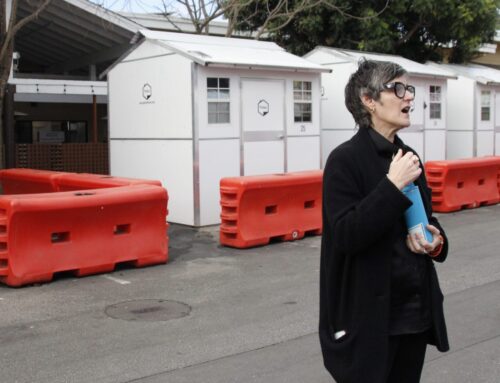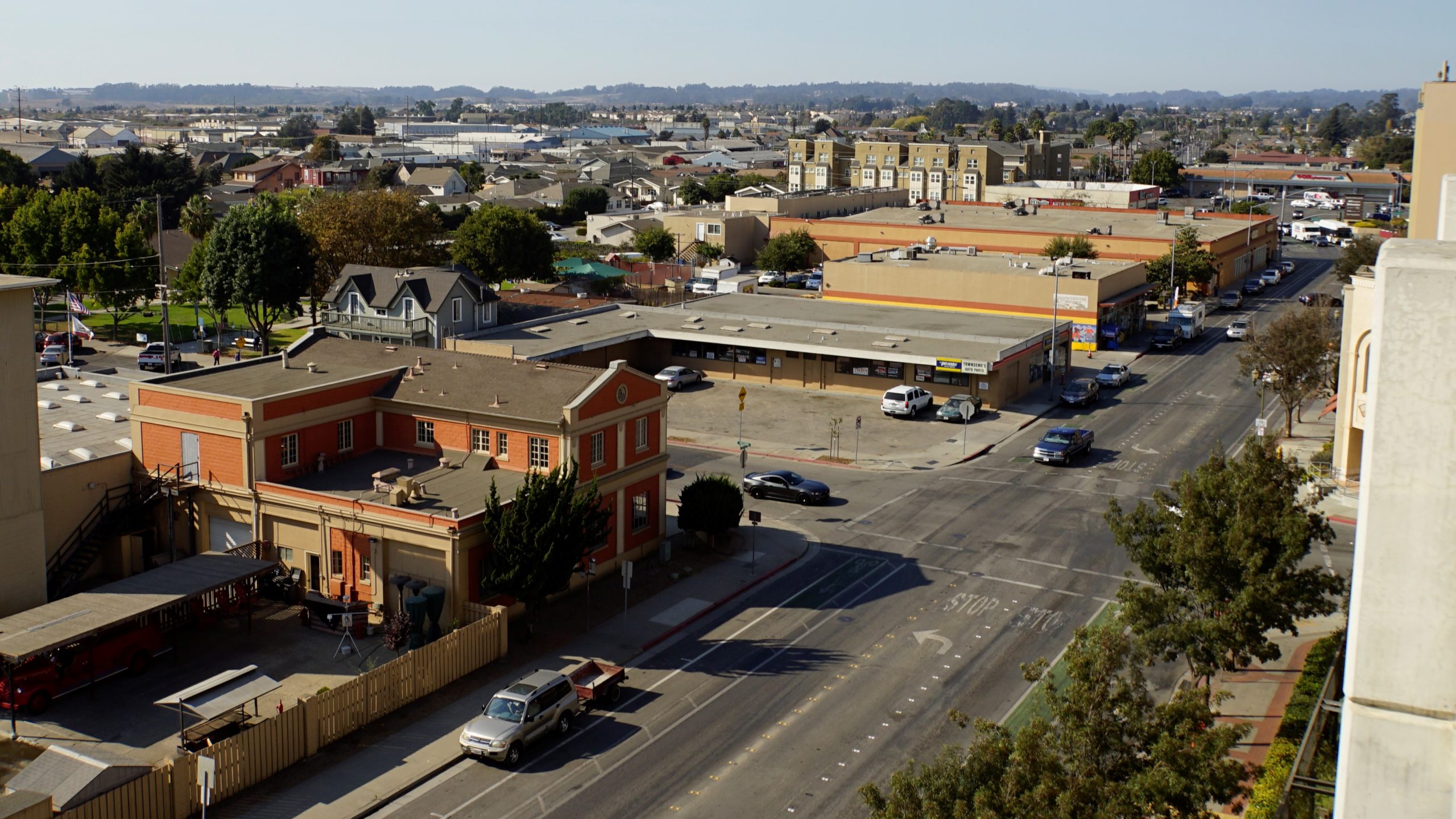
Downtown Watsonville and other areas could see more construction of affordable apartments with new state targets for home building. (Kara Meyberg Guzman — Santa Cruz Local file)
SANTA CRUZ >> The state’s requirements for the number of homes built in Santa Cruz and Monterey counties will more than triple starting in June 2023.
Requirements of the Regional Housing Needs Allocation, or RHNA, are set roughly every eight years for the Monterey Bay region. State leaders set home building minimums for each region to try to address the state’s housing shortage.
When areas do not make adequate progress on their housing production goals, state law allows streamlined approval of some housing projects. City and county leaders then have limited power to change projects.
- Cities and other jurisdictions in Santa Cruz and Monterey counties will be expected to permit at least 33,274 homes from June 30, 2023 to Dec. 15, 2031, according to an Aug. 31 letter from a state housing and community development department leader. Most of those homes are required to be affordable for people with lower incomes.
- Santa Cruz and Monterey counties were expected to permit roughly 10,430 homes from Jan. 1, 2014 to Dec. 31, 2023.
New state laws have broadened how state leaders define housing needs. The previous housing production target focused on needs related to predicted growth. The new housing target is meant to include existing needs such as for households who live in crowded homes or who pay a large portion of income to rent.
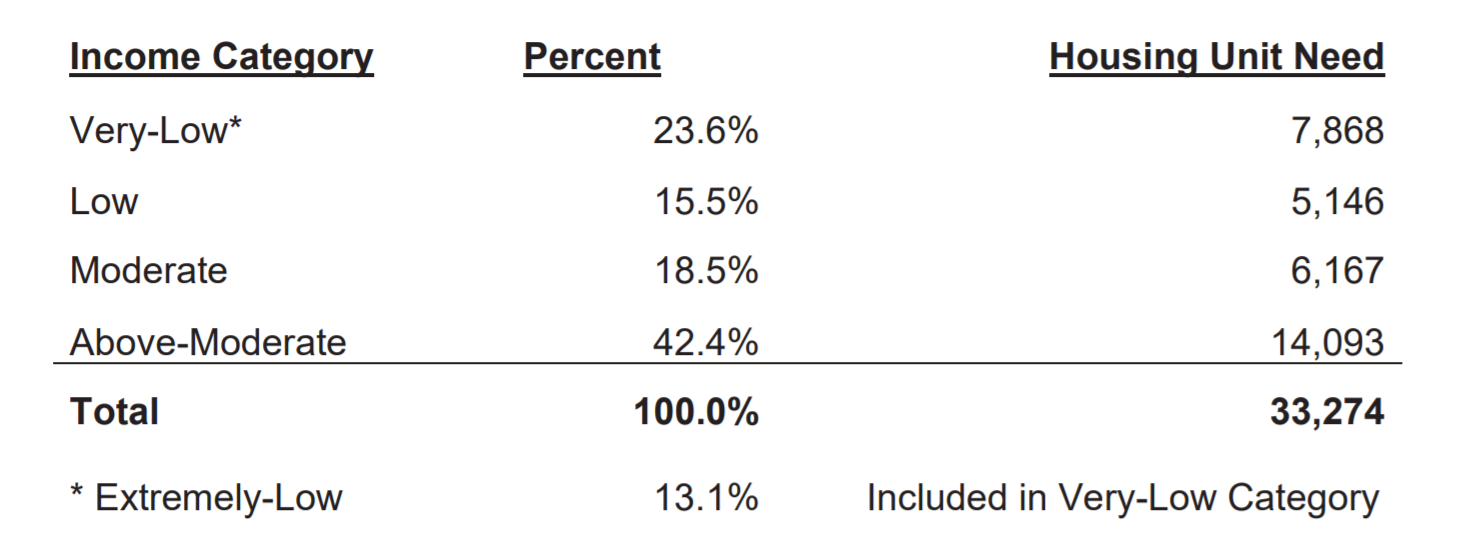
State leaders require Santa Cruz and Monterey counties to issue permits for 33,274 new homes from June 30, 2023 to Dec. 15, 2031.The income limits for affordable housing are based on area median income and set annually for each county by the state. (California Department of Housing and Community Development)
Progress on housing production goals
Santa Cruz, Watsonville, Scotts Valley, Capitola and unincorporated areas of Santa Cruz County have had mixed progress on their housing production goals through 2023.
Each year, state leaders publish the progress made on the state-mandated affordable housing targets. As of July 31:
- The City of Santa Cruz has surpassed its 2023 RHNA goals for low, moderate and above-moderate incomes — but it has issued permits for 12 of 180 required very-low-income units.
- Capitola has not reached any of its 2023 housing targets, state authorities reported.
- Scotts Valley has issued permits for more than double its required above-moderate income units. It has issued zero permits for very-low-income homes, according to state authorities.
- Unincorporated areas of Santa Cruz County reached the goal for permits issued for moderate-income households. The area is roughly 41% toward its goal for low-income home permits and roughly 23% toward its goal for very-low income homes.
Scroll down to view charts published July 30 by the California Department of Housing and Community Development.
- The Regional Housing Needs Allocation cycle started Dec. 31, 2015 and ends Dec. 31, 2023. Local jurisdictions are in the “fifth cycle.”
- The section at top right of each chart lists each area’s progress toward building permits issued for very low, low, moderate and above-moderate income households. For example, as of July 30, Santa Cruz city staff permitted 12 very-low income units. The state requires Santa Cruz to permit 180 low-income units by the end of the cycle.
Santa Cruz
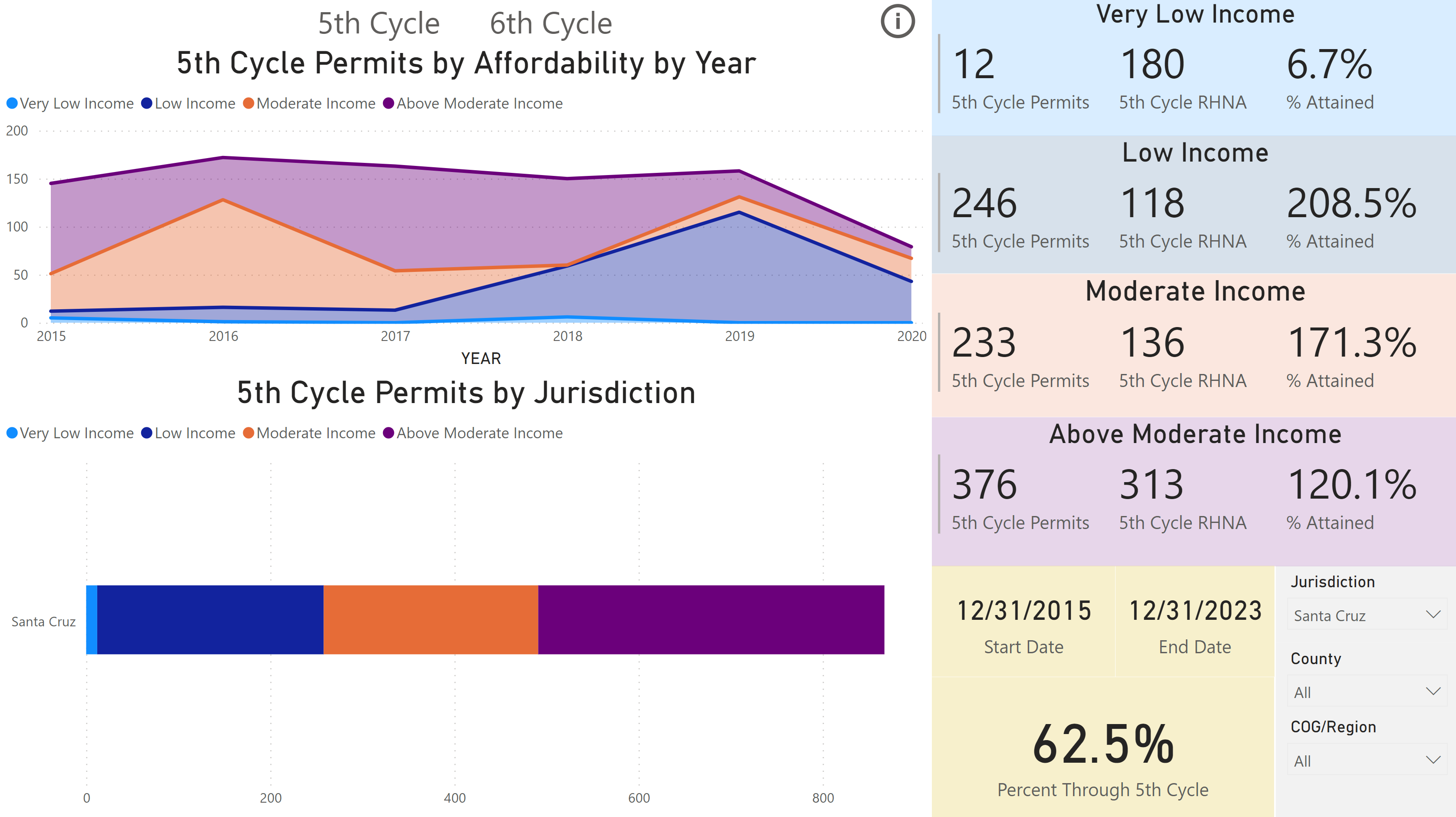
Watsonville
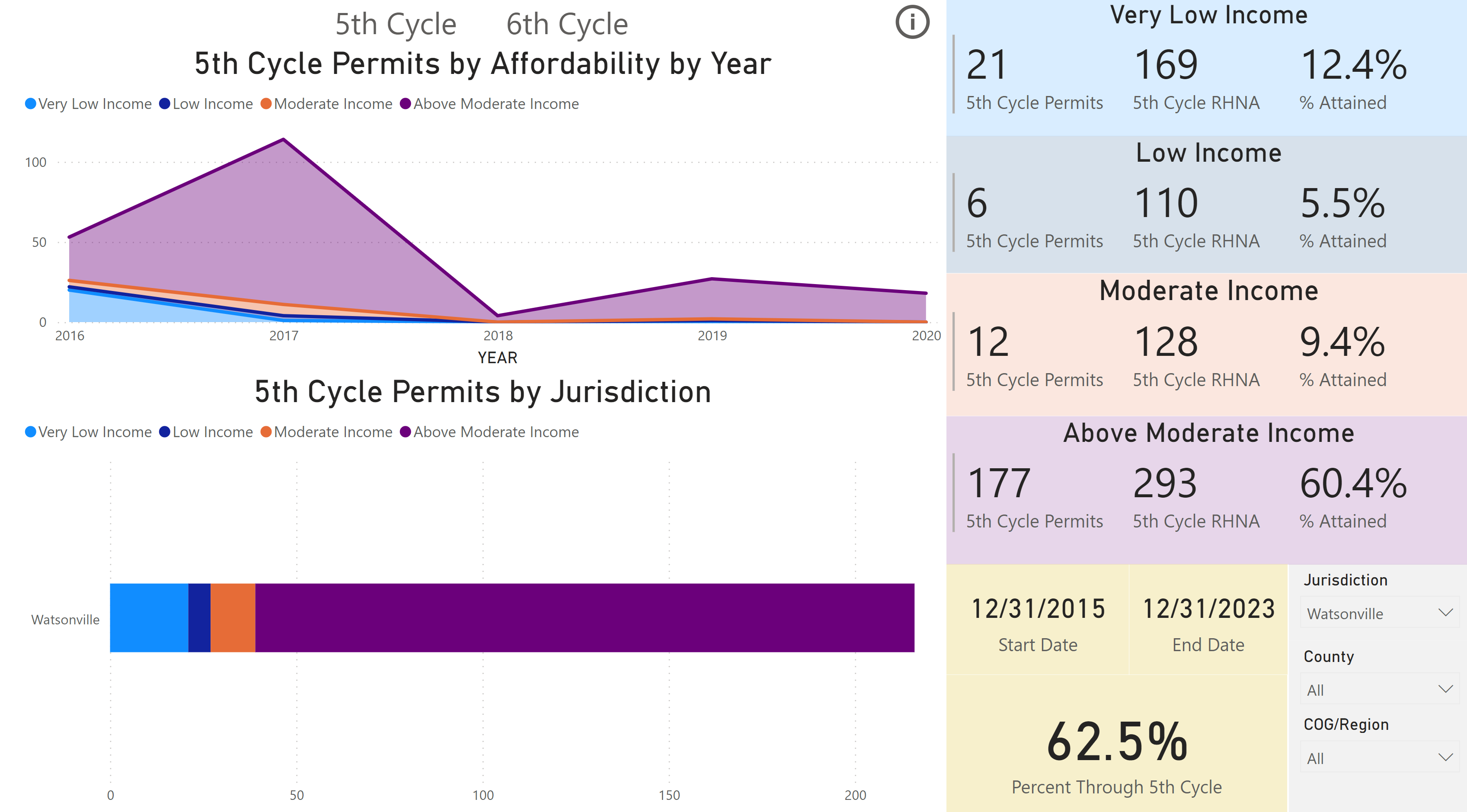
Unincorporated Santa Cruz County
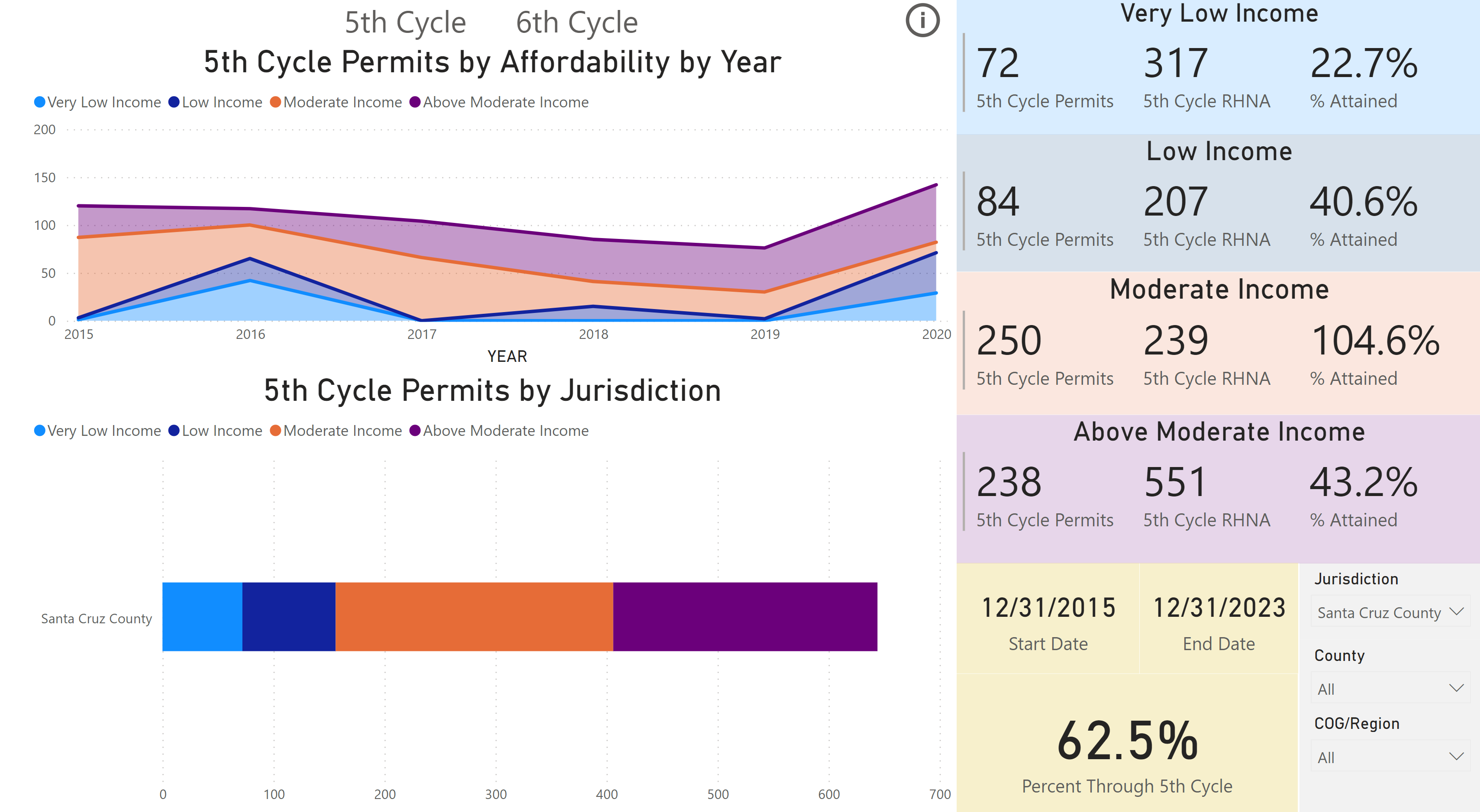
Capitola
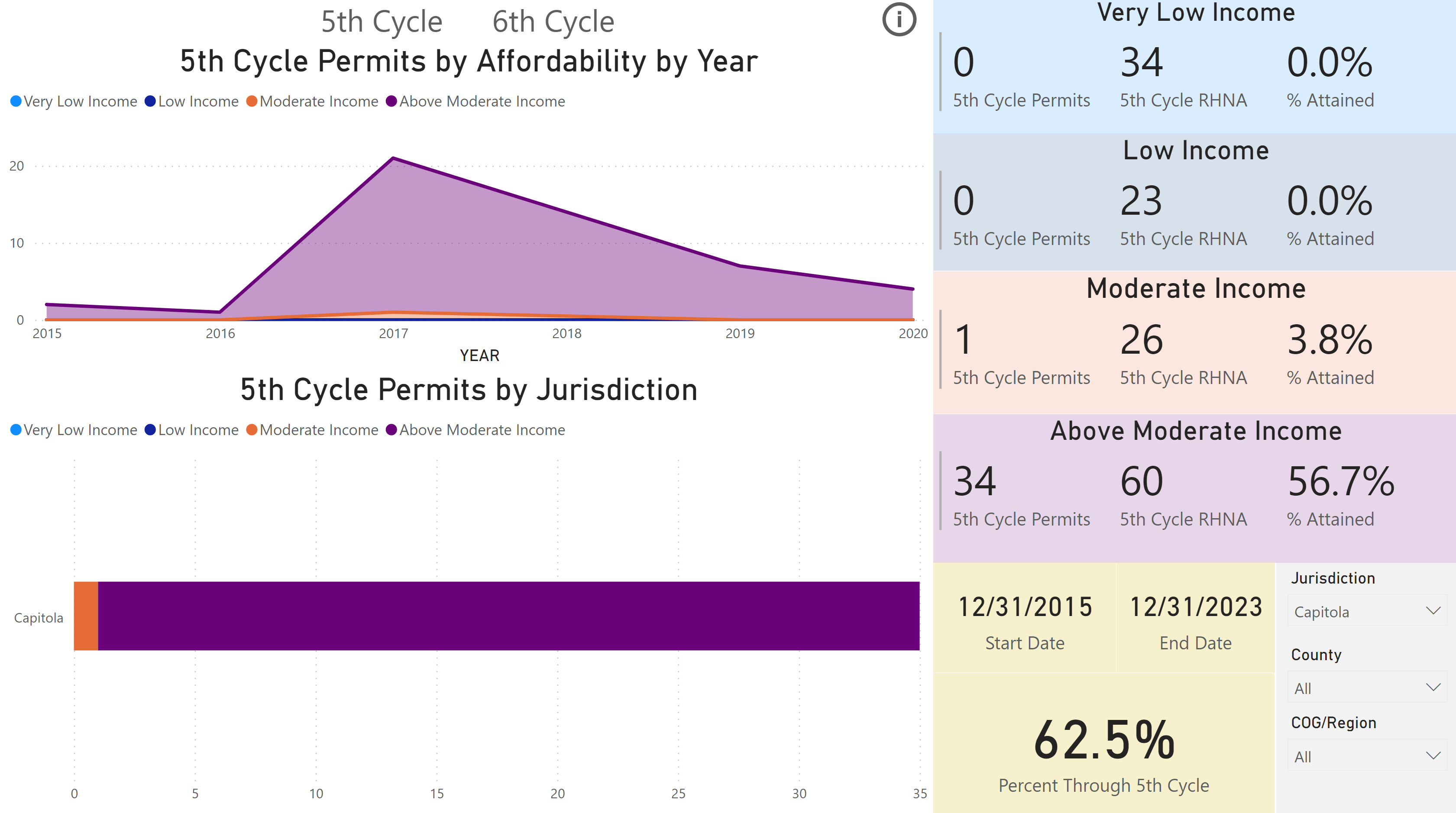
Scotts Valley
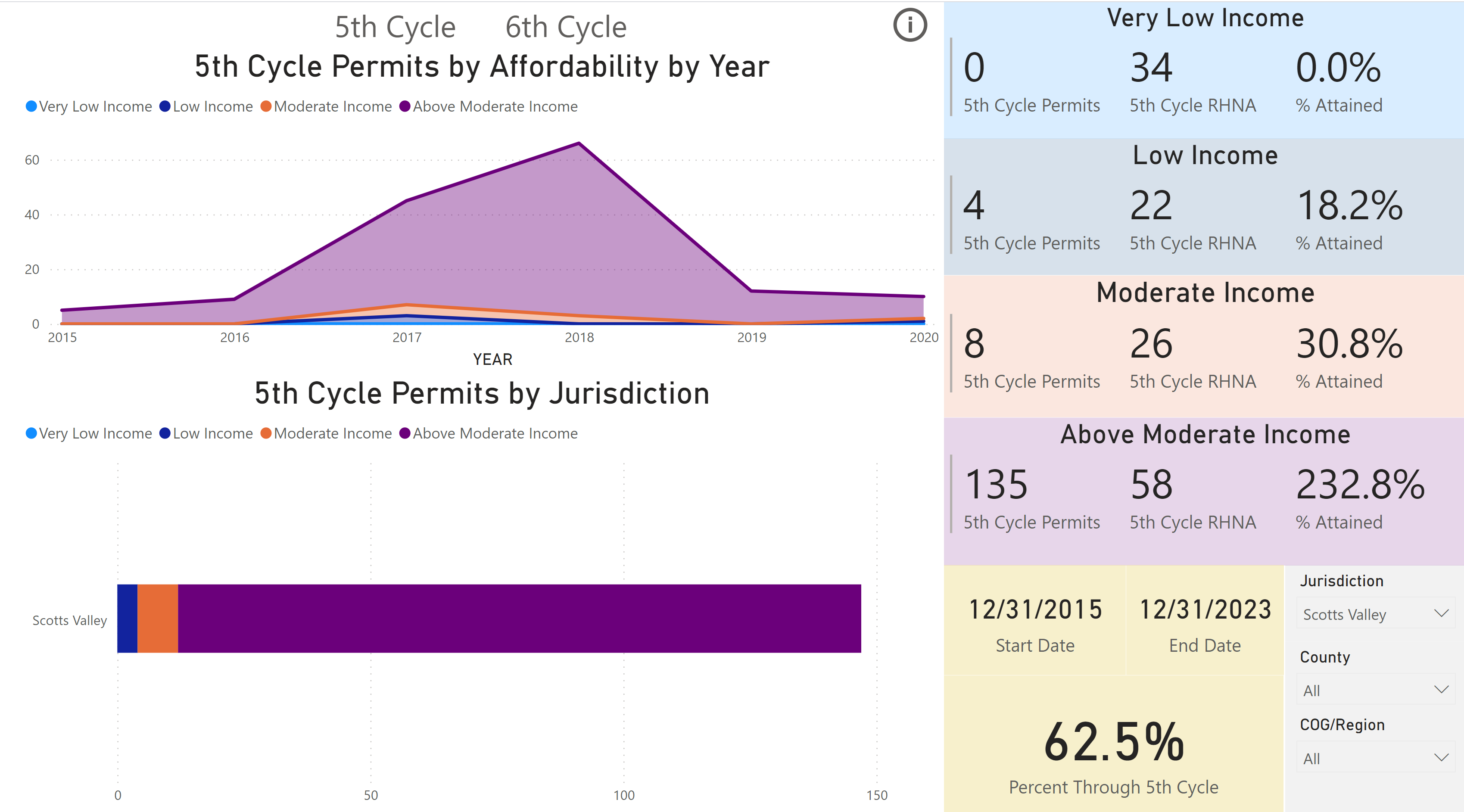
Regional home building requirements to be discussed
At 6 p.m. Wednesday Sept. 8, the board of the Association of Monterey Bay Area Governments, known as AMBAG, will hear a presentation on the regional housing requirements from a state housing and community development department representative.
- In the next few months, AMBAG will develop a plan that distributes the regional housing production goals to the cities and counties. The plan is expected to be drafted by January and approved by June.
- No decision is expected Wednesday, but public comment is invited.
- AMBAG is the federally-designated planning organization for the Monterey Bay region.
- Local representatives on AMBAG’s board are: Capitola City Councilmember Kristen Petersen, Scotts Valley Mayor Derek Timm, Santa Cruz City Councilmember Justin Cummings, Watsonville City Councilmember Eduardo Montesino, and Santa Cruz County supervisors Manu Koenig and Greg Caput.
After the plan is approved by AMBAG, then each city and county in the region will be expected to submit a “housing element.” The housing element is part of each jurisdiction’s General Plan and is meant to ensure that local zoning allows the level of housing production called for by the state.
City and county leaders can expect increased state scrutiny on local plans for where to build affordable housing, according to an AMBAG list of frequently-asked questions. New rules encourage local jurisdictions to identify new sites for affordable housing.
To participate in Wednesday’s meeting: Register to join the online meeting. To comment ahead of the meeting, email [email protected] by 5 p.m. Tuesday. For questions on how to participate, email [email protected] or call 831-883-3750.
Become a member of Santa Cruz Local, an independent, community-supported newsroom that’s owned and led by local journalists. Our stories are free and always will be, but we rely on your support.
Already a member? Support Santa Cruz Local with a one-time gift.
Kara Meyberg Guzman is the CEO and co-founder of Santa Cruz Local. Prior to Santa Cruz Local, she served as the Santa Cruz Sentinel’s managing editor. She has a biology degree from Stanford University and lives in Santa Cruz.


